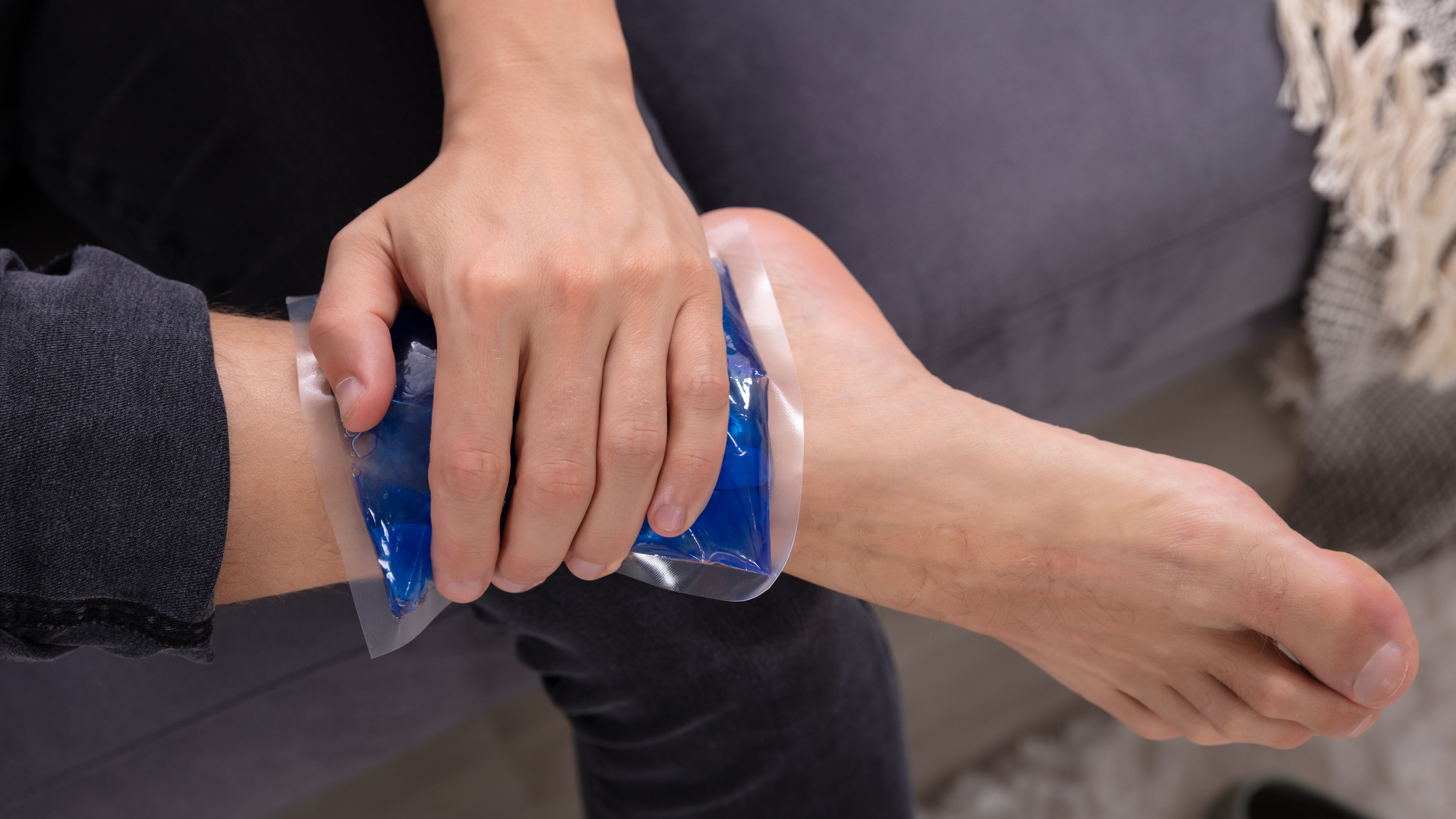Ankle Injuries: What To Look Out For And How To Treat Them
Ankle injuries are among the most common sports ailments. Here’s what you need to know about them

Most sporty people will roll an ankle at some point in their life. If they’re lucky, this will mean nothing more than a couple of weeks of rest, but ankle injuries can be more serious, and it’s vital to make sure you treat them correctly from the start.
We spoke to consultant orthopedic surgeon professor Paul Lee (who spoke to Coach previously about whether running is bad for your knees) to find out more about what the most common ankle injuries are and how best to treat them. If you want to know how to rehab after an ankle injury, read this physiotherapist's advice on how to fix ankle injuries.
Professor Paul Lee is a double board-certified orthopaedic surgeon who specialises in knee and hip conditions, and sports medicine. Lee is a medical director at MSK Doctors on Harley Street, has over 50 peer-reviewed publications and has written textbooks, as well as having treated Premier League footballers for sports injuries.
What are the most common ankle injuries?
In sport the most common ankle injuries are ligament injuries. Fractures can also happen, but more often where there’s a fall. In sport, your movement tends to be a little bit more controlled and the energy going through the body is slightly different. So it tends to be ligaments.
What ligament injuries happen in the ankle?
In layman’s terms, sprains and tears, but a sprain is basically a partial tear. The soft tissue in the ankle is ligaments or tendons, and ligaments are not something that you can stretch. Pull too much on a ligament and it tears. Tendons tend to be more elastic, they stretch and spring back, so when we say a sprained ligament we really mean a partial tear. The next question is, how much is it torn? Is it 10%, 50%, 99%? That's a tricky one.
How can you tell if it’s a serious sprain?
If you have a sprain or any injury to your ankle, the first thing to test is whether you can bear weight. If you can, it’s probably not that serious. That’s a crude test, but it’s a very important one. If you have severe pain when you put weight on it then you’ve probably done something serious and at that point, I would highly recommend getting it checked out. The most painless, sensitive method is an MRI scan. If you go to A&E, they will do an X-ray for you, but X-rays look at bones for fractures. Occasionally there’s a fracture, but it’s extremely unusual to have massive fractures in sports injury.
The other mode of investigation is an ultrasound scan. But the trouble there is, if you have a sprained ankle, someone prodding it with an ultrasound probe is not ideal. The best way is to stick your leg into an MRI scanner. It will tell you what’s what.
What are the different grades of ankle sprains?
We have grades 1, 2 and 3. It’s not a hard science. If things settle down after a couple of weeks, it’s probably a grade 1 tear. If it takes longer than that but it does settle without surgery, you probably have a grade 2 tear. If it doesn’t settle and you need surgery, you most probably have a grade 3 tear.
If you can bear weight, how should you treat your ankle at home?
Ice and elevation are very important. You can also easily get a splint or what we call the moon boot or aircast boot. It will stabilize the leg.
It’s about immobilization for the first two weeks. Physiotherapy is extremely important, as are stabilization exercises, but actually after acute injury, the first week or two is a recovery phase. It is the rest phase, an immobilization phase, and if you do not do that, the body will not heal.

How long do ankle sprains take to heal?
You have to judge when you can put weight back on it, when you can walk on it. You just keep trying. It’s difficult to say because it depends how deep the injury is. If you have a severe injury then it may take months, but if it’s just a simple sprain, usually after a couple of weeks you'll be fine.
Should you take anti-inflammatories?
I do not think it’s a very good idea, at least for the first week.
If it’s a true ankle sprain, it’s a partial tear of the ligament. When you tear anything the biology of the body will first allow the body to heal by releasing some bleeding, some growth factor, some cells to go in there. The first few days are the inflammatory process and you want the inflammatory process to happen to help heal the ligament.
With elevation, ice and compression we’re using a physical or mechanical way to reduce the inflammation, instead of a chemical way. That is a lot better.
What are long-term treatments for severe sprains?
If it’s that serious and something has ripped apart completely, then you probably want it repaired. That means surgery. But you don’t have to—you could wait for the body to rehab.
Either we put things back together or wait for the body to scar up, and usually when you put things together, they tend to heal in a better location. Alternatively, we can put people in a plaster or something that completely immobilizes it to allow the ligament or the soft tissue to scar up to stabilize the joint.
It depends on your age and on your needs. The ankle is a very complex joint. There’s a lot of bones in there and a lot of interaction within them. When it gets that serious I would say get a scan and see an expert to see what's going on.
Can you strengthen the ligaments in your ankle?
Absolutely. A lot of ankle stability exercise can be done. Using a wobble board is one way to strengthen the ankle. This is also where the tendons come in. The stronger the tendons and the muscle in and around the ankle, the less the ligaments have to do.
How do you tell the difference between an ankle sprain and a fracture of the ankle?
A fracture usually is a lot more painful than a sprain. It is highly unlikely someone will be able to bear weight for the first five days if they have sustained a fracture.
What else should you look out for in the ankle?
Sometimes it’s not just about the ligament. It could be a cartilage injury—it could be the cartilage within the talus bone that’s injured. This is something that cannot be picked up by X-ray or CT scan. The only way that we identify that is an MRI scan. If there is a cartilage injury and it’s picked up early enough, it is very possible to treat it. But if left too long, it may not be.
If the sprain is really bad, the joint may have partially popped out and popped back in. At that point it is highly likely that you would have an articular injury, which is the cartilage injury. With a high-grade ankle sprain, we often get a scan for that specific reason. You may feel your ankle click and basically you'll feel like there’s a little pebble in your joint. It’s not a great feeling.
Get the Coach Newsletter
Sign up for workout ideas, training advice, reviews of the latest gear and more.

Nick Harris-Fry is a journalist who has been covering health and fitness since 2015. Nick is an avid runner, covering 70-110km a week, which gives him ample opportunity to test a wide range of running shoes and running gear. He is also the chief tester for fitness trackers and running watches, treadmills and exercise bikes, and workout headphones.









